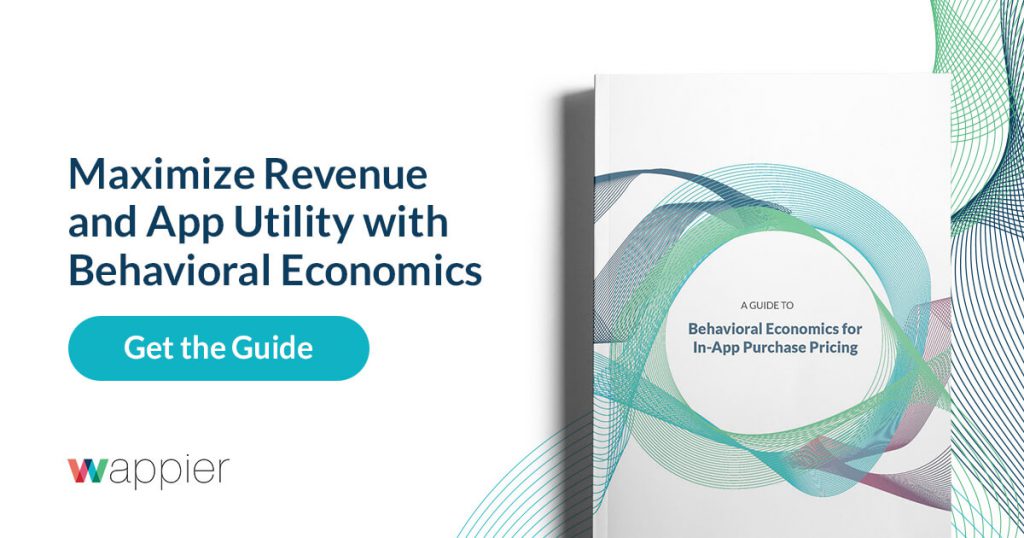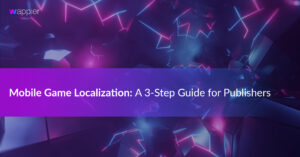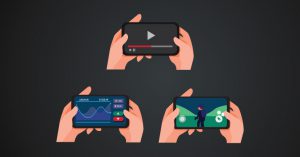The latest IAP statistics suggest that despite the growing prominence of in-app advertising, mobile developers should never overlook the value of in-app purchases.

wappier’s IAP statistics summary:
- In-app purchase (IAP) sales drive 43% of mobile gaming revenue and 21% of non-gaming app revenue
- The average cost of acquiring a user who will make an IAP is $86.61 across both Android and iOS platforms.
- Long-term users may be more profitable than new users. In fact, data suggests that 8% of long-term customers account for 40% of all sales.
In 2020, many app monetization experts tend to emphasize in-app advertising. This isn’t without reason — after all, the business model for popular hyper-casual games is driven largely by ad revenue. However, current IAP statistics suggest that developers would be remiss to overlook purchases of virtual currency and goods. According to App Annie, direct revenue from the App Store and Google Play reached $120 billion over the past year, a figure that will likely grow.
IAPs are a high-cost, high-return monetization method
In-app purchases, paid downloads, and advertising drive the vast majority of developer revenue. Of these options, IAPs tend to have the highest implementation costs. However, they also generate some impressive returns.
One Liftoff study noted that in 2019, iOS and Android gaming apps earned $22.51 billion and $18.94 billion respectively in IAP revenue. That combined total represents 4.27% year-on-year growth and far surpasses other categories like entertainment ($2.42 billion for iOS and $351 million for Android).
Other reports, such as this one from Forbes and AdColony, further affirm IAP importance:
- IAPs drive 43% of gaming app revenue and 21% of non-gaming app revenue.
- 63% of mobile app developers found IAPs to be a highly effective monetization method.
- According to 75% of respondents, IAP revenue was surpassed only by rewarded video ad revenue.

Mobile game revenue benefits from the joint contributions of in-app purchases and advertising
When reviewing IAP statistics, it’s crucial to account for the interplay between IAP and in-app ads. Both are extremely effective monetization methods, and each has its role to play in the freemium ecosystem.
In-app advertising is a low-cost way of generating revenue from a large volume of players. That’s why ads work so well for the hyper-casual model: Developers can market their app broadly and acquire a high volume of consumers at a low cost. Then, despite their short life cycles, these low-cost players will generate a return on the initial investment. By comparison, the cost of acquiring quality, high-LTV users — the kind who spend on IAPs — is quite high. However, the latest IAP statistics show that these users deliver stronger returns in the long run, proving that both IAPs and ads are valuable strategies.
- The average cost of acquiring a user who will make an IAP is $86.61 across Android and iOS platforms. (Android: $86.72/IOS: $77.45)
- In gaming apps, developers can expect to see conversion rates of 1.6%-2% among those users. For comparison, the average cost per install comes to $1.42!
These conversion rates might seem low, but they underscore the high variance in player spending. While the median ARPPU for all free-to-play games is approximately $6, a small segment of players — dubbed “whales” — will spend upwards of $35 to $70 per day. For high-performing games that have enough value to retain spenders, this creates a significant revenue stream for developers.
The good news is that the cost of acquiring spenders is decreasing. That trend implies that the IAP model will remain relevant even amidst the rise of hyper-casual apps. Liftoff noted that acquisition costs dropped from a cross-platform average of $120.30 in September 2018 to $79.34 in August 2019. Conversions, meanwhile, hovered above 2% throughout the year, except for an average 1.75% drop during late winter and spring.
It’s also worth noting that developers can maximize the impact of IAPs by regional targeting. The costs to acquire spenders and overall conversions vary by region:
- North America: $112.22 for a 3.4% conversion rate
- Europe: $56.15 for a 2.6% conversion rate
- Latin America: $27.13 for a 1.8% conversion rate
- Asia-Pacific: $67.68 for a 1.6% conversion rate
Currently, acquisition costs range from $24.01 in Brazil, up to $112.76 in the United States for payer installs.
User retention increases the potential for IAPs
One of the most effective ways to maximize your IAPs is to cultivate player retention. According to Liftoff, the average time between the installation of a mobile game and an in-app purchase is one day, 22 hours, and 35 minutes. Apps that can sustain three-day or even seven-day retention periods are far more likely to generate revenue from in-game spending.
Retained users aren’t just more likely to complete a purchase; they also tend to make repeat purchases and spend higher amounts. One Adobe study noted that 8% of customers account for 40% of sales if they continue using the service beyond an initial product launch window, proving that retention is key to sustained revenue.

In-app purchases can be the most challenging revenue stream to maintain. However, the latest IAP statistics indicate that they can also be the most rewarding in the long-term. What’s more, developers have noted a positive impact on user engagement and revenue by offering multiple pathways to premium content. For example, some games offer in-app purchases alongside rewarded advertising options. The challenge moving forward is to leverage user insights specific to your app to maximize retention and overall revenue for the long term.
To find out how wappier can help you achieve these goals, take a look at our feature article Why The Mobile Game Industry Needs Intelligent Revenue Management.







